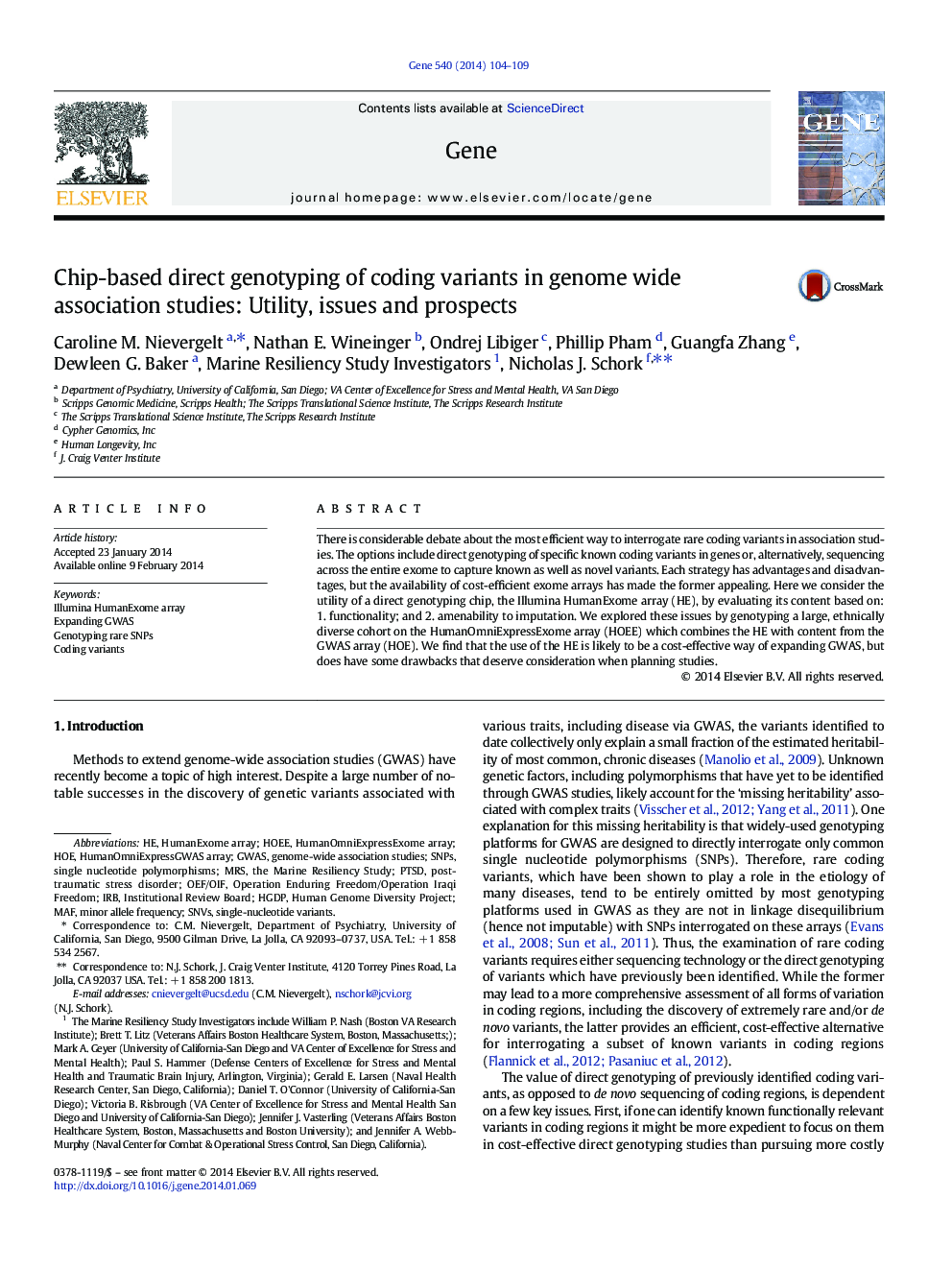| Article ID | Journal | Published Year | Pages | File Type |
|---|---|---|---|---|
| 2816546 | Gene | 2014 | 6 Pages |
•Direct genotyping chips for coding variants provide an alternative to sequencing.•Assessed utility of Illumina HumanExome array•Evaluation of functionality and amenability to imputation•Exome array is cost-effective way to expand GWAS, but has some drawbacks.
There is considerable debate about the most efficient way to interrogate rare coding variants in association studies. The options include direct genotyping of specific known coding variants in genes or, alternatively, sequencing across the entire exome to capture known as well as novel variants. Each strategy has advantages and disadvantages, but the availability of cost-efficient exome arrays has made the former appealing. Here we consider the utility of a direct genotyping chip, the Illumina HumanExome array (HE), by evaluating its content based on: 1. functionality; and 2. amenability to imputation. We explored these issues by genotyping a large, ethnically diverse cohort on the HumanOmniExpressExome array (HOEE) which combines the HE with content from the GWAS array (HOE). We find that the use of the HE is likely to be a cost-effective way of expanding GWAS, but does have some drawbacks that deserve consideration when planning studies.
